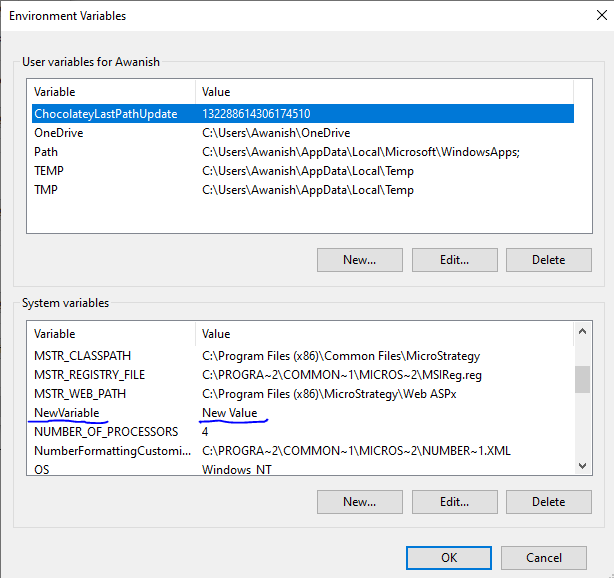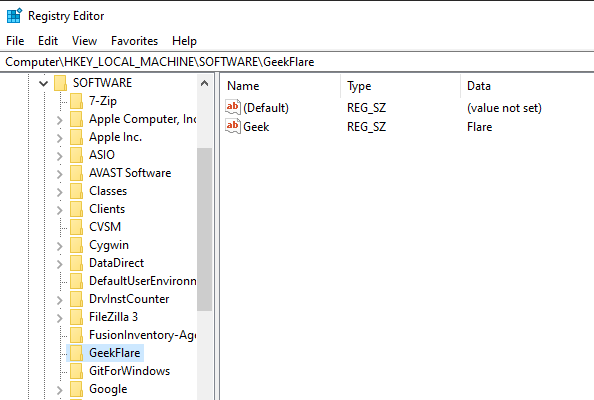I will show you several operations which an administrator can perform on a remote windows system using ansible-playbook.
Ansible is one of the most used DevOps tools in the market today. It provides a bunch of windows modules that are used to configure and manage the Windows server. I assume you already have Ansible installed on Windows from where you want to manage the Windows servers.
The following are some of the commonly used tasks performed by Windows administrators on a daily basis. You will be amazed to see how easy it is administered Windows using Ansible.
My Ansible Windows controller machine’s IP address is 192.168.0.106, and my remote Windows system’s IP address is 192.168.0.102. Before you get started, make sure you run a win_ping module to check whether you are able to connect to windows remote server or not.
Geekflare@MSEDGEWIN10 ~
$ ansible win -m win_ping
192.168.0.102 | SUCCESS => {
"changed": false,
"ping": "pong"
}My connection to a remote host is successful.
So, let’s get started with Ansible Playbooks…
Copying Files
win_copy is an ansible module that copies a file from the local server to a remote Windows host. I will use this module to copy a single PDF.
Use the below YAML code, give the source and destination paths.
Geekflare@MSEDGEWIN10 ~
$ vi copy.yml
---
- hosts: win
tasks:
- name: Copy File
win_copy:
src: C:\output.pdf
dest: C:\ansible_examples\
remote_src: yesRun the ansible-playbook for win_copy.
Geekflare@MSEDGEWIN10 ~
$ ansible-playbook copy.yml
PLAY <x><x><x><x><x><x><x><x>[win]</x></x></x></x></x></x></x></x> ***********************************************************************************************************************************
TASK [Gathering Facts] ***********************************************************************************************************************
ok: [192.168.0.102]
TASK [Copy File] *****************************************************************************************************************************
changed: [192.168.0.102]
PLAY RECAP ***********************************************************************************************************************************
192.168.0.102
: ok=2 changed=1 unreachable=0 failed=0
skipped=0 rescued=0 ignored=0The file has been copied successfully at the destination location on a remote windows system.

Install/UnInstall MSI
To install an application using the MSI file, you need to use win_get_url to mention the path of the MSI file to download and then use the win_package module to install it. The state present means the MSI will be installed on the machine, and the application is in the present state.
Here, I am installing Apache.
YAML code to be used:
Geekflare@MSEDGEWIN10 ~
$ vi msi.yml
---
- name: Installing Apache MSI
hosts: win
tasks:
- name: Download the Apache installer
win_get_url:
url: https://archive.apache.org/dist/httpd/binaries/win32/httpd-2.2.25-win32-x86-no_ssl.msi
dest: C:\ansible_examples\httpd-2.2.25-win32-x86-no_ssl.msi
- name: Install MSI
win_package:
path: C:\ansible_examples\httpd-2.2.25-win32-x86-no_ssl.msi
state: presentRun the ansible-playbook to install using MSI.
Geekflare@MSEDGEWIN10 ~
$ ansible-playbook msi.yml
PLAY [Installing Apache MSI] *****************************************************************************************************************
TASK [Gathering Facts] ***********************************************************************************************************************
ok: [192.168.0.102]
TASK [Download the Apache installer] *********************************************************************************************************
changed: [192.168.0.102]
TASK [Install MSI] ***************************************************************************************************************************
changed: [192.168.0.102]
PLAY RECAP ***********************************************************************************************************************************
192.168.0.102
: ok=3 changed=2 unreachable=0 failed=0
skipped=0 rescued=0 ignored=0Now, go to the windows system and check if the apache application got installed successfully.
C:\Users\geekflare>cd C:\Program Files (x86)\Apache Software Foundation\Apache2.2\bin
C:\Program Files (x86)\Apache Software Foundation\Apache2.2\bin>httpd -v
Server version: Apache/2.2.25 (Win32)
Server built: Jul 10 2013 01:52:12You can also install applications using MSI with arguments. Below is the same example as above, but instead of a state, we are using an install argument to install apache.
YAML code to be used:
---
- name: Installing Apache MSI
hosts: win
tasks:
- name: Download the Apache installer
win_get_url:
url: https://archive.apache.org/dist/httpd/binaries/win32/httpd-2.2.25-win32-x86-no_ssl.msi
dest: C:\ansible_examples\httpd-2.2.25-win32-x86-no_ssl.msi
- name: Install MSI
win_package:
path: C:\ansible_examples\httpd-2.2.25-win32-x86-no_ssl.msi
arguments:
- /install
- /passive
- /norestartTo uninstall an application using the MSI file, you need to use the win_package module. The state absent means the application will be uninstalled using the MSI file.
Here, I am uninstalling Apache.
Geekflare@MSEDGEWIN10 ~
$ vi uninstall_msi.yml
---
- name: UnInstalling Apache MSI
hosts: win
tasks:
- name: UnInstall MSI
win_package:
path: C:\ansible_examples\httpd-2.2.25-win32-x86-no_ssl.msi
state: absentRun the ansible-playbook to uninstall using MSI.
Geekflare@MSEDGEWIN10 ~
$ ansible-playbook uninstall_msi.yml
PLAY [UnInstalling Apache MSI] *****************************************************************************************************************
TASK [Gathering Facts] ***********************************************************************************************************************
ok: [192.168.0.102]
TASK [UnInstall MSI] *************************************************************************************************************************
changed: [192.168.0.102]
PLAY RECAP ***********************************************************************************************************************************
192.168.0.102
: ok=2 changed=1 unreachable=0 failed=0
skipped=0 rescued=0 ignored=0Now, if I check the apache version, I will get the below output as the application got uninstalled.
C:\Program Files (x86)\Apache Software Foundation\Apache2.2\bin>httpd -v 'httpd' is not recognized as an internal or external command,
operable program or batch file.Uninstall Software (.EXE)
You can also uninstall software with .exe file using the product id of that software.
Geekflare@MSEDGEWIN10 ~
$ vi uninstall.yml
---
- hosts: win
tasks:
- name: Uninstall 7-Zip from the exe
win_package:
path: C:\Program Files\7-Zip\Uninstall.exe
product_id: 7-Zip
arguments: /S
state: absentRun the ansible-playbook to uninstall 7-Zip.
Geekflare@MSEDGEWIN10 ~
$ ansible-playbook uninstall.yml
PLAY <x><x><x><x><x><x><x><x>[win]</x></x></x></x></x></x></x></x> *************************************************************************************************************************************************************************************
TASK [Gathering Facts] *************************************************************************************************************************************************************************
ok: [192.168.0.102]
TASK [Uninstall 7-Zip from the exe] ***********************************************************************************************************************************************************
changed: [192.168.0.102]
PLAY RECAP *************************************************************************************************************************************************************************************
192.168.0.102 : ok=2 changed=1 unreachable=0 failed=0 skipped=0 rescued=0 ignored=0Stop/Start/Restart Windows Services
win_service ansible module is used to start, stop, or restart a service. Here, I will show you how to stop the tomcat service.

You need to mention the service name in the YAML file and set the state to stop.
Geekflare@MSEDGEWIN10 ~
$ vi service.yml
---
- hosts: win
tasks:
- name: Stop service Tomcat
win_service:
name: Tomcat8
state: stoppedRun the ansible-playbook to stop the tomcat service.
Geekflare@MSEDGEWIN10 ~
$ ansible-playbook service.yml
PLAY <x><x><x><x><x><x><x><x>[win]</x></x></x></x></x></x></x></x> ***********************************************************************************************************************************
TASK [Gathering Facts] ***********************************************************************************************************************
ok: [192.168.0.102]
TASK [Stop service Tomcat] ****************************************************************************************************************
changed: [192.168.0.102]
PLAY RECAP ***********************************************************************************************************************************
192.168.0.102
: ok=2 changed=1 unreachable=0 failed=0
skipped=0 rescued=0 ignored=0If you check the tomcat service on the windows system, it is now in stopped status.

You can define state to started or restarted or paused to change the status of the service.
Gathering Facts
Using win_disk_facts ansible module, you can retrieve all the disk information of the target host.
Geekflare@MSEDGEWIN10 ~
$ vi disk.yml
---
- hosts: win
tasks:
- name: Get disk facts
win_disk_facts:
- name: Output first disk size
debug:
var: ansible_facts.disks<x>[0]</x>.size
- name: Convert first system disk into various formats
debug:
msg: '{{ disksize_gib }} vs {{ disksize_gib_human }}'
vars:
# Get first system disk
disk: '{{ ansible_facts.disks|selectattr("system_disk")|first }}'
# Show disk size in Gibibytes
disksize_gib_human: '{{ disk.size|filesizeformat(true) }}'
disksize_gib: '{{ (disk.size/1024|pow(3))|round|int }} GiB'Run the ansible-playbook to get the disk information.
Geekflare@MSEDGEWIN10 ~
$ ansible-playbook disk.yml
PLAY <x><x><x><x><x><x><x><x>[win]</x></x></x></x></x></x></x></x> ***********************************************************************************************************************************
TASK [Gathering Facts] ***********************************************************************************************************************
ok: [192.168.0.102]
TASK [Get disk facts] ************************************************************************************************************************
ok: [192.168.0.102]
TASK [Output first disk size] ****************************************************************************************************************
ok: [192.168.0.102] => {
"ansible_facts.disks<x>[0]</x>.size": "1000204886016"
}
TASK [Convert first system disk into various formats] ****************************************************************************************
ok: [192.168.0.102] => {
"msg": "932 GiB vs 931.5 GiB"
}
PLAY RECAP ***********************************************************************************************************************************
192.168.0.102
: ok=4 changed=0 unreachable=0 failed=0
skipped=0 rescued=0 ignored=0Using win_command ansible module, you can execute commands on the remote host and get CPU information, device details, and much more.
Geekflare@MSEDGEWIN10 ~
$ vi check.yml
---
- hosts: win
tasks:
- name: Get disk facts
win_command: wmic cpu get caption, deviceid, name, numberofcores, maxclockspeed, status
register: usage
- debug: msg="{{ usage.stdout }}"Run the ansible-playbook to get remote system information.
Geekflare@MSEDGEWIN10 ~
$ ansible-playbook check.yml
PLAY <x><x><x><x><x><x><x><x>[win]</x></x></x></x></x></x></x></x> ***********************************************************************************************************************************
TASK [Gathering Facts] ***********************************************************************************************************************
ok: [192.168.0.102]
TASK [Get facts] ************************************************************************************************************************
changed: [192.168.0.102]
TASK [debug] *********************************************************************************************************************************
ok: [192.168.0.102] => {
"msg": "Caption DeviceID MaxClockSpeed
Name
NumberOfCores Status \r\r\nIntel64 Family 6 Model 142 Stepping 9 CPU0 2712 Intel(R) Core(TM) i5-7200U CPU @ 2.50GHz 2 OK \r\r\n\r\r\n"
}
PLAY RECAP ***********************************************************************************************************************************
192.168.0.102
: ok=3 changed=1 unreachable=0 failed=0
skipped=0 rescued=0
ignored=0Running Commands
Whatever commands you run on a window, they can be run through the ansible win_command module. You just need to specify the command in your YAML file. Here, I am just creating a directory.
Geekflare@MSEDGEWIN10 ~
$ vi commands.yml
---
- hosts: win
tasks:
- name: run an executable using win_command
win_command: whoami.exe
- name: run a cmd command
win_command: cmd.exe /c mkdir C:\testRun the ansible-playbook to perform win_command operation.
Geekflare@MSEDGEWIN10 ~
$ ansible-playbook commands.yml
PLAY <x><x><x><x><x><x><x><x>[win]</x></x></x></x></x></x></x></x> ***********************************************************************************************************************************
TASK [Gathering Facts] ***********************************************************************************************************************
ok: [192.168.0.102]
TASK [run an executable using win_command] ***************************************************************************************************
changed: [192.168.0.102]
TASK [run a cmd command] *********************************************************************************************************************
changed: [192.168.0.102]
PLAY RECAP ***********************************************************************************************************************************
192.168.0.102
: ok=3 changed=2 unreachable=0 failed=0
skipped=0 rescued=0 ignored=0Environment Variables
A windows system has multiple environment variables, for example, JAVA_HOME. Using the win_environment ansible module, you can add or modify environment variables on a windows system. In this example, I am adding a new variable to the windows environment variables list.
Geekflare@MSEDGEWIN10 ~
$ vi env.yml
---
- hosts: win
tasks:
- name: Set an environment variable for all users
win_environment:
state: present
name: NewVariable
value: New Value
level: machineRun the ansible-playbook to add the environment variable on a remote windows machine.
Geekflare@MSEDGEWIN10 ~
$ ansible-playbook env.yml
PLAY <x><x><x><x><x><x><x><x>[win]</x></x></x></x></x></x></x></x> ***********************************************************************************************************************************
TASK [Gathering Facts] ***********************************************************************************************************************
ok: [192.168.0.102]
TASK [Set an environment variable for all users] *********************************************************************************************
changed: [192.168.0.102]
PLAY RECAP ***********************************************************************************************************************************
192.168.0.102
: ok=2 changed=1 unreachable=0 failed=0
skipped=0 rescued=0 ignored=0Go to the environment variables window; you will see the new variable you just added is present here.

Add/Edit Registry
win_regedit ansible module is used to add or edit registry details on a remote windows machine. You need to give the path of the registry and content to be added/updated. Here I am creating a new registry entry GeekFlare inside HKLM:\SOFTWARE path and then adding name and data to this registry.
Geekflare@MSEDGEWIN10 ~
$ vi registry.yml
---
- hosts: win
tasks:
- name: Creating a registry
win_regedit:
path: HKLM:\SOFTWARE\GeekFlare
- name: Modifying a registry, adding name and data
win_regedit:
path: HKLM:\SOFTWARE\GeekFlare
name: Geek
data: FlareRun the ansible-playbook to add the registry.
Geekflare@MSEDGEWIN10 ~
$ ansible-playbook registry.yml
PLAY <x><x><x><x><x><x><x><x>[win]</x></x></x></x></x></x></x></x> ***********************************************************************************************************************************
TASK [Gathering Facts] ***********************************************************************************************************************
ok: [192.168.0.102]
TASK [Creating a registry] *******************************************************************************************************************
changed: [192.168.0.102]
TASK [Modifying a registry, adding name and data] ********************************************************************************************
changed: [192.168.0.102]
PLAY RECAP ***********************************************************************************************************************************
192.168.0.102
: ok=3 changed=2 unreachable=0 failed=0
skipped=0 rescued=0 ignored=0If you go to Registry Editor on the remote system, you can see this registry has been added successfully with Name and Data parameters.

Delete Log
win_eventlog ansible module is used to add, clear, or remove windows event logs from the windows system.
Go to Windows Powershell, and list the EventLogs present on the remote windows machine.
PS C:\Users\Geekflare> Get-EventLog -List
Max(K) Retain OverflowAction Entries Log
------ ------ -------------- ------- ---
20,480 0 OverwriteAsNeeded 33,549 Application
20,480 0 OverwriteAsNeeded 0 HardwareEvents
512 7 OverwriteOlder 20 Internet Explorer
20,480 0 OverwriteAsNeeded 0 Key Management Service
128 0 OverwriteAsNeeded 190 OAlerts
Security
20,480 0 OverwriteAsNeeded 44,828 System
15,360 0 OverwriteAsNeeded 3,662 Windows PowerShellNow, I will show how to remove logs from all sources for Internet Explorer.
Geekflare@MSEDGEWIN10 ~
$ vi log.yml
---
- hosts: win
tasks:
- name: Remove Internet Explorer Logs
win_eventlog:
name: Internet Explorer
state: absentRun the ansible-playbook to remove the Internet Explorer form the remote windows machine.
Geekflare@MSEDGEWIN10 ~
$ ansible-playbook log.yml
PLAY <x><x><x><x><x><x><x><x>[win]</x></x></x></x></x></x></x></x> *************************************************************************************************************************************************************************************
TASK [Gathering Facts] *************************************************************************************************************************************************************************
ok: [192.168.0.102]
TASK [Remove Internet Explorer Logs] **********************************************************************************************************************************************
changed: [192.168.0.102]
PLAY RECAP *************************************************************************************************************************************************************************************
192.168.0.102 : ok=2 changed=1 unreachable=0 failed=0 skipped=0 rescued=0 ignored=0Now, if you list the EventLogs again, you will see Internet Explorer logs have been removed.
PS C:\Users\Geekflare> Get-EventLog -List
Max(K) Retain OverflowAction Entries Log
------ ------ -------------- ------- ---
20,480 0 OverwriteAsNeeded 33,549 Application
20,480 0 OverwriteAsNeeded 0 HardwareEvents
20,480 0 OverwriteAsNeeded 0 Key Management Service
128 0 OverwriteAsNeeded 190 OAlerts
Security
20,480 0 OverwriteAsNeeded 44,835 System
15,360 0 OverwriteAsNeeded 56 Windows PowerShellSo, that was all about Ansible playbooks, which can be used for remote windows administration. Go ahead and try out these playbooks. You can also try other Ansible Windows modules available.

